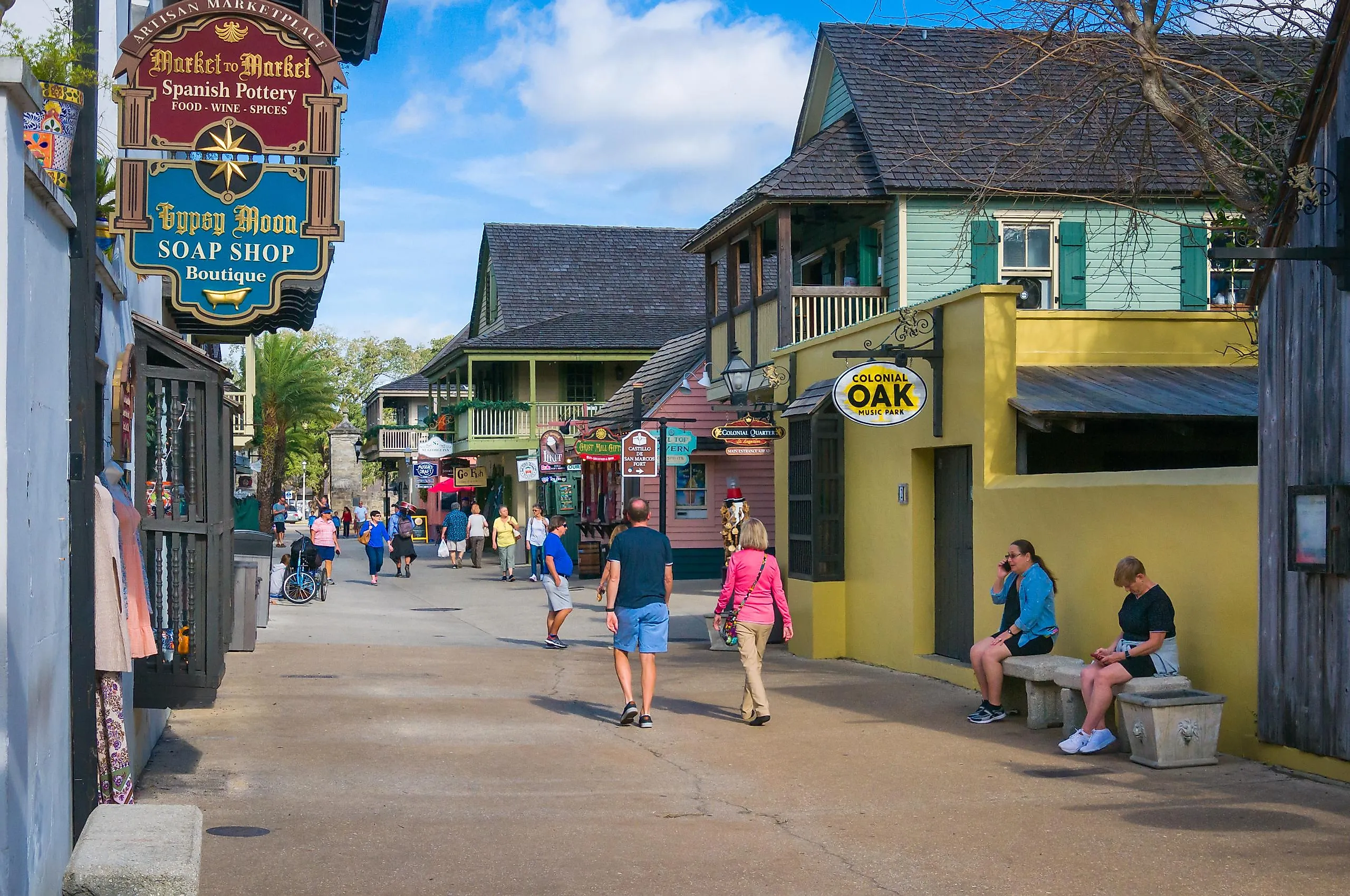
10 Towns in Florida With Rich History
Florida has a long and interesting history. The state has been under Spanish, French, and British colonial rule at one point or another, and the historic towns showcase elements of each of these cultures along with its unique brand of Southern charm.
Native Americans have been present in Florida for around 12,000 years and continue to significantly influence its culture. Historical Florida towns feature elements of European, particularly Spanish, flair that complements the welcoming atmosphere. Here are ten Florida towns that have the richest history.
St. Augustine

St. Augustine is an essential part of any list of historic Florida towns. Believed to have been founded in 1565, St. Augustine is rich in cultural history, Spanish architecture, and historic sites. The most historic site is the Castillo de San Marcos National Monument, a fort that has stood since 1695.
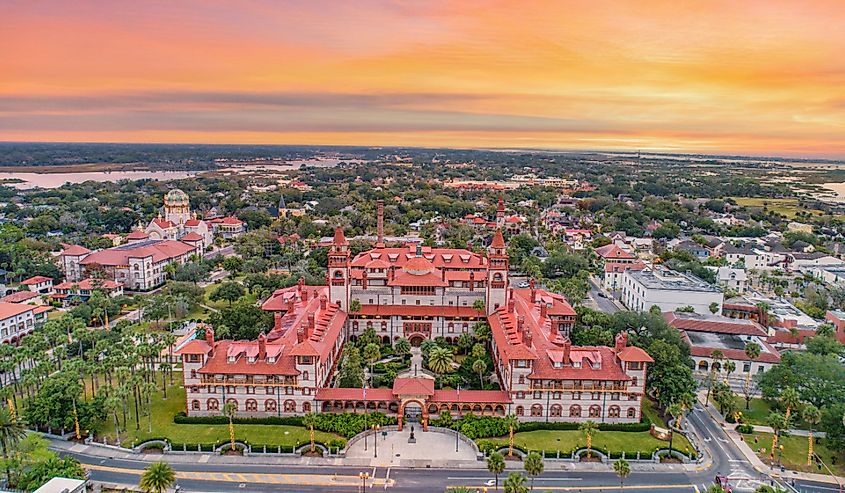
The best way to discover St. Augustine is on foot. The brick-lined streets are filled with historic landmarks like the City Gate, the oldest schoolhouse in the United States, and the Fountain of Youth Archaeological Park. Aviles Street, dating back to the 1600s, is the oldest street in America and boasts some of the oldest historical sites, like the Spanish Hospital Museum. Along with a treasure trove of historic sites, St. Augustine also offers historic reenactments, including the famous Changing of the Guard ceremony, and a variety of tours by boat, train, and even ghost tours.
Monticello
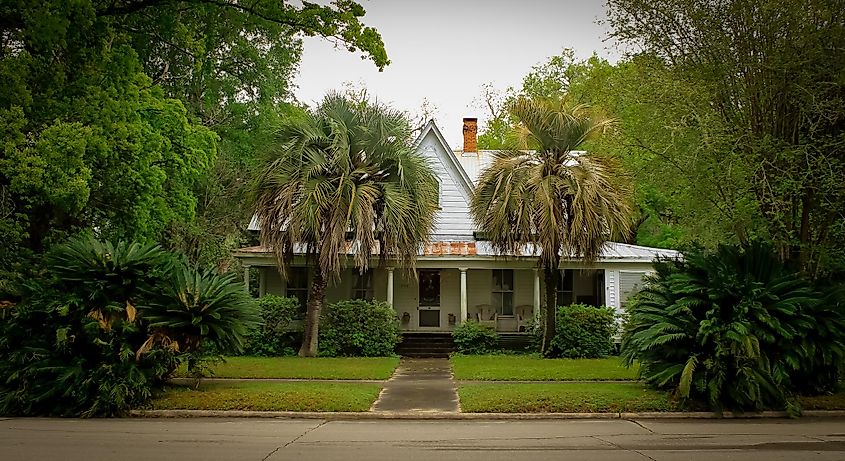
Monticello is a historic town in Jefferson County, established in 1827 and named for President Jefferson's Virginia estate. During the Antebellum Period, the town attracted planters, with cotton and agriculture thriving. During and following the Civil War, Monticello's economy, heavily reliant on plantation agriculture, faced significant challenges, leading the town to seek new economic opportunities.
In the 1880s, the primary agricultural focus shifted from cotton to watermelons, an event still celebrated today with the annual Watermelon Festival. Many historic buildings, exemplifying various architectural styles from different periods, surround Courthouse Square, including the notable Perkins Building. The Perkins Building houses the Monticello Opera House, built in 1890, which hosts events throughout the year.
Cross City
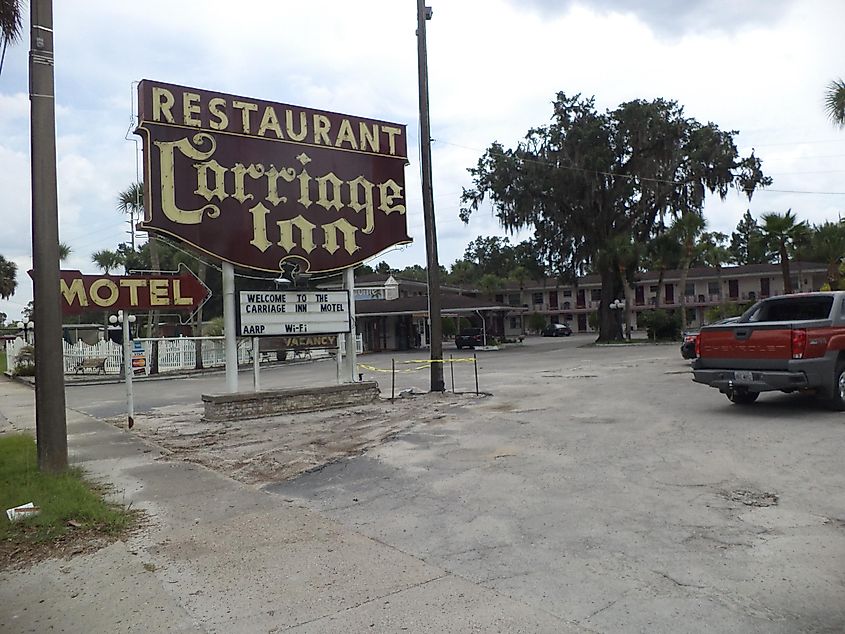
Cross City is a historic logging town in the Big Bend area. The town took its name from the "crossroads" of the Old Spanish Trail and the Old Salt Road that leads to Horseshoe Beach. The historic Seaboard Coast Line Railroad, which ran through the town, played a crucial role in the export of lumber, contributing to substantial economic growth.
One of the most successful lumber companies was the Putnam Lumber Company, established by Irish lumber magnate William O'Brian. O'Brian built a 36-room retreat, The Putnam Hotel, that included "pecky cypress", lumber that is all but extinct today. Today, the hotel stands as a testament to the bygone timber industry that once made this area an economic powerhouse.
Yankeetown
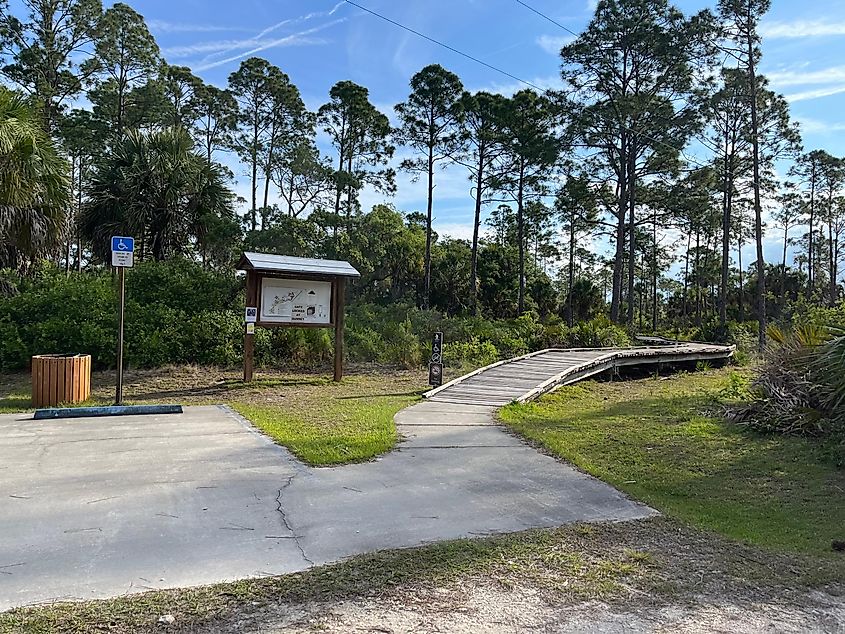
Just south of Cross City, Yankeetown was named by a postal worker who referred to it as "that Yankee town." A gentleman from Indiana, Armanis Knotts, purchased the land in 1923 after being charmed by its hunting and fishing opportunities and subsequently founded the town. He built the Izzak Walton Lodge in the following year, a hotel that continues to accept guests and features a restaurant overlooking the Withlacoochee River.
Yankeetown started as a resort town for northern fishermen but during the Great Depression, local citizens discovered they could make a decent living by commercial shrimping and crabbing. This tradition remains today, and the town has comfortably transformed into a quaint fishing village. Yankeetown's most famous visitor was none other than Elvis Presley, who starred in the 1962 movie "Follow That Dream," filmed here, in Inverness, and Inglis.
Tarpon Springs
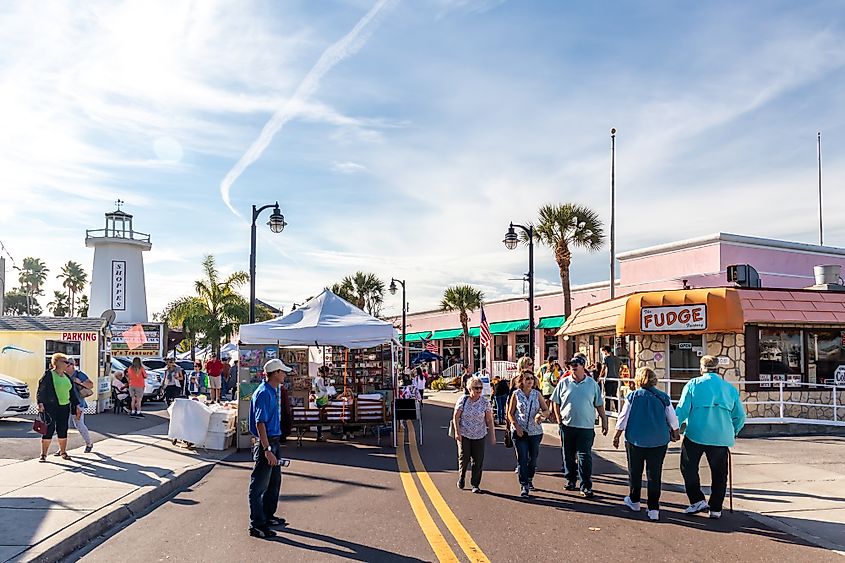
Tarpon Springs, on the Gulf Coast, has a rich sponge diving history and a Greek heritage. In the early 20th century, Greek sponge fishermen established a thriving industry here, and the town retains a significant Greek influence to this day. Centered around Dodecanese Boulevard, the town's main thoroughfare, Tarpon Springs is a vibrant community.
The historic sponge docks are a reminder of the industry that once thrived here. The St. Nicholas Greek Orthodox Church, dating back to the 1940s, features stained glass windows and a Grecian marble altar and serves as a focal point for the Greek-American community today. Many Greeks, displaced during the decline of the sponge industry, have returned to retire in this unique Floridian locale with its strong Greek character.
Amelia Island

Amelia Island, the northernmost barrier island in Florida, has an eclectic history that involves pirates, Huguenots, and commercial shrimpers. The most historic site is Fort Clinch, named after General Clinch, a famous veteran of the Seminole and Mexican Wars. Visitors can explore Fort Clinch and learn about the island's history at Fort Clinch State Park and the Amelia Island History Museum.
The historic downtown features mainly Victorian architecture, reflecting influences from the eight different nations that have governed Amelia Island over the past 400 years. Horse-drawn carriage tours offer the best way to explore downtown, though it is also easily accessible on foot.
Milton
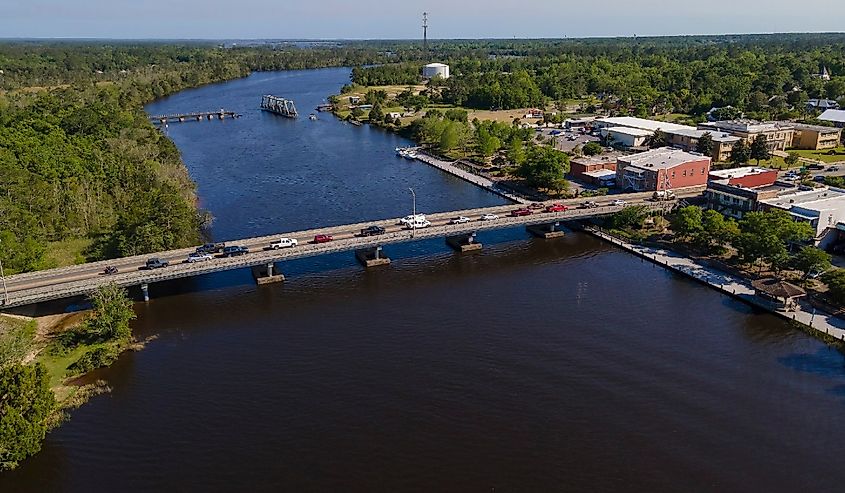
Milton is a quaint town with brick storefronts lining the historic downtown, which is on the National Register of Historic Places. The town rose to economic prominence during the Civil War, becoming the most industrialized city in the state at the time. Now, Milton is affectionately known as the Canoe Capital of Florida.
Incorporated in 1844, Milton is one of the oldest towns in Florida. In the 1880s, the establishment of a railroad facilitated timber distribution during the lumber boom. There are more than two dozen historic sites downtown, including the Imogene Theatre, the town's only three-story building. The most famous residence, the Milligan-Whitmire House, was built in 1889 and is affectionately known as the 'gingerbread house.'
Micanopy

Micanopy (pronounced Mi-kuh-no-pe) is a historic town that is fun to say. Located in central Florida, this charming town epitomizes small-town allure. Micanopy started as a native trading post and became the first American town in Florida. Known as the "town that time forgot," the historic downtown features towering oak trees and 19th-century buildings now housing shops and restaurants.
Walking through the historic downtown, one feels like stepping back in time. The streets, lined with oaks and dotted with antique shops, retain their original character, untouched by modern architecture, and exude a nostalgic atmosphere. Notable among the historic buildings are the Dailey Building, the Mott-May Building, and Mountain Garage, built in 1913 and a prime example of architecture from the first age of automobiles.
Cortez
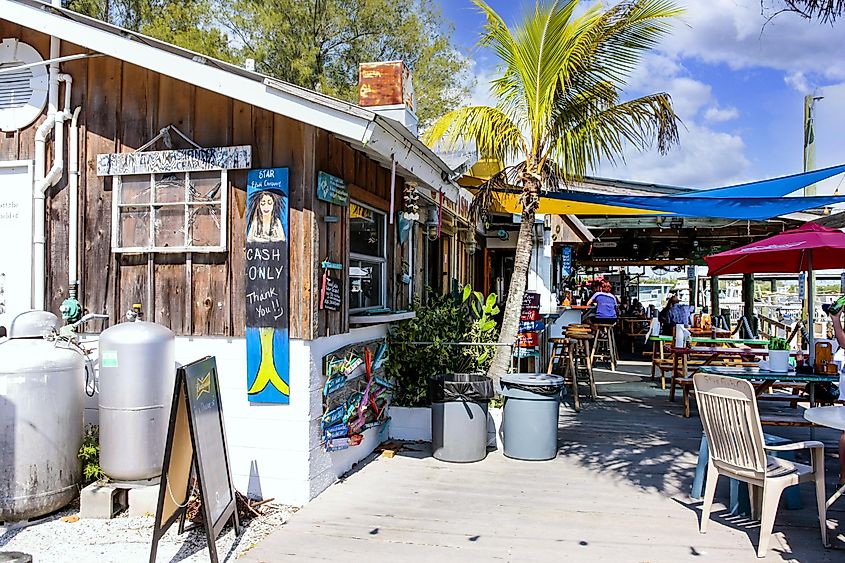
Cortez, a historic fishing village situated on the Gulf Coast, was formerly known as Hunter's Point. It boasts 97 buildings recognized on the National Register of Historic Places, including a schoolhouse from 1912 that now functions as a Maritime Museum dedicated to showcasing the village's rich fishing history. Founded by the Guthrie, Bell, Taylor, and Fulford families, many of their descendants continue to live in Cortez.
The village has intentionally rejected modern commercial influences, maintaining its historical authenticity. As a result, it stands as one of the final remaining old Florida outposts in the state. Walking tours provide glimpses into the village's heritage, featuring historic homes and structures like the Pillsbury boat shop and Burton Store. Established in 1890, the Pillsbury boat shop is recognized as the oldest commercial building in Cortez.
Bronson
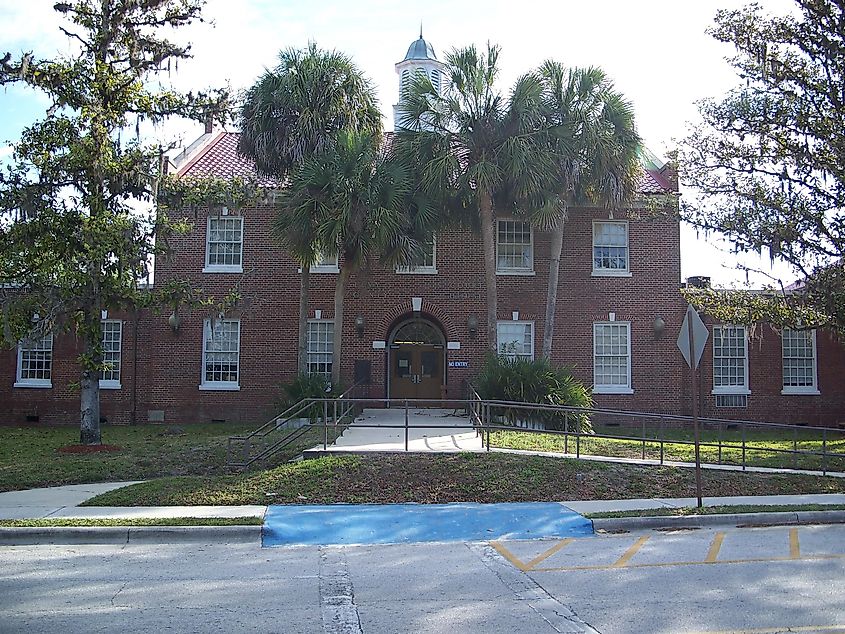
Bronson is a lesser-known town, which adds to its charm. The most famous resident, Bo Diddley, is interred in the Bronson Cemetery. Bronson's origins date back to the mid-19th century, when the area primarily consisted of pine trees and palmetto bushes. The arrival of the railroad in the 1880s facilitated the export of agricultural products.
The town hall, constructed in the 1880s, was once home to Dr. James Middleton Jackson and his wife, Mary Glenn (Shands) Jackson. The town has sought recognition from the Florida Division of Historic Preservation to designate the home as a historic marker. The Henry and Rilla White Youth Foundation building, a two-story structure, served as a community grocery store from the 1950s through the 1980s and now houses the headquarters of the Levy County Historical Society.
In Conclusion
Rich in charm, these towns provide a nostalgic view of what locals affectionately call 'old Florida.' Having withstood wars, fires, and hurricanes, they have preserved many of their original buildings. Amelia Island showcases the beauty and culture of the eight nations that once ruled it, whereas Tarpon Springs honors its Greek roots. Despite their unique heritages and distinct vibes, these towns collectively commit to safeguarding their history and ensuring its relevance for upcoming generations.











